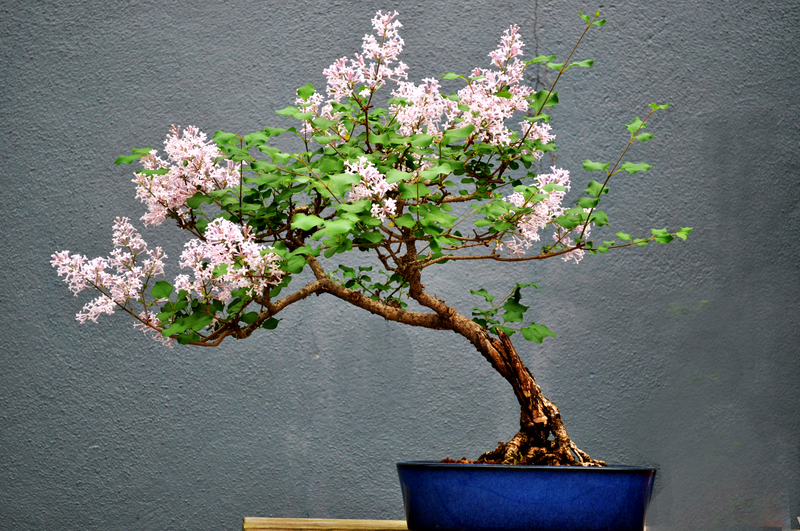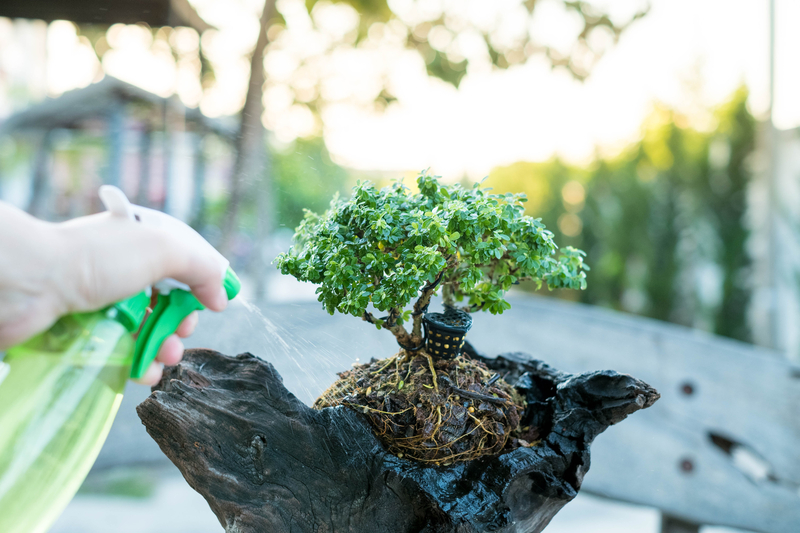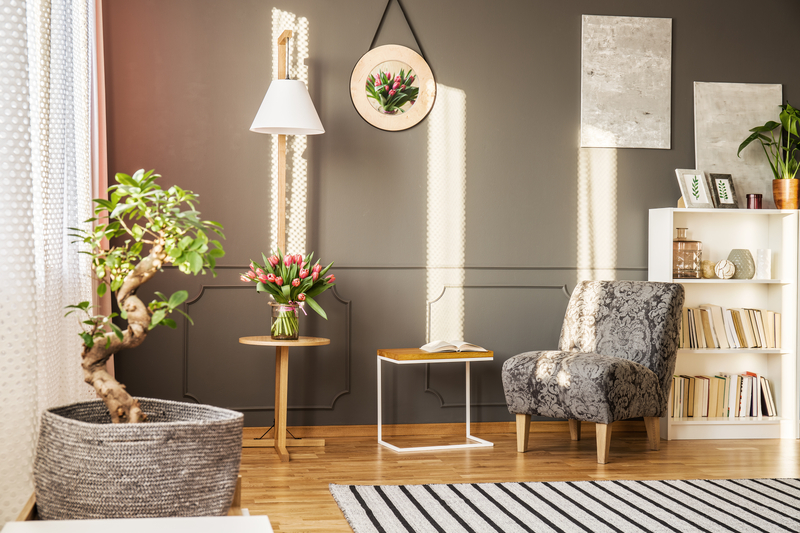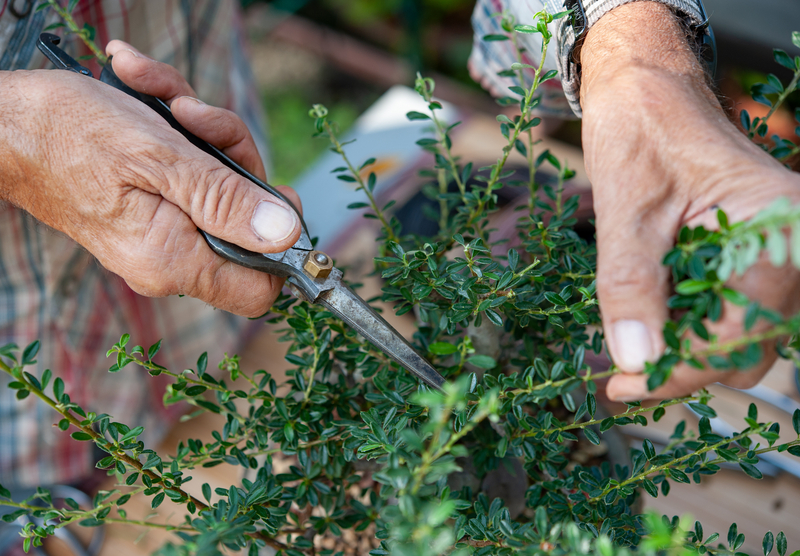As an art form traditional to Japanese culture, bonsai trees can bring tranquility to any home or office. However, coming in many species, not all are created equal. Because of their unique nature, bonsai tree care is different from other pot-bound house plants.
From watering to pruning, this miniature tree needs individualized routines and understanding to continue healthy growth. So, let’s take a deeper look into what it takes.
How Often Do You Need to Water a Bonsai Tree?
There isn’t any consistent rule of thumb you can use for these small trees. The amount of water needed can vary depending on the tree species, size, pot size, time of year, soil mixture, climate, lighting conditions, and the season. For this reason, you should provide individualized care.
A good watering routine for your indoor bonsai tree depends on how saturated the soil is. There are three different methods that you can use: your finger, the chopstick method, or a moisture meter. The finger method is the easiest of the three. To do this, you have to stick your finger .5″ inches into the soil and add water if it’s dry.
The chopstick method is similar. The steps go as follows: Insert a chopstick, tongue depressor, or popsicle stick 1-2 inches deep into the soil. The best location for this is halfway between the main stem and the rim of the pot. After you leave this for about 10 minutes, remove it from the soil. A darkened watermark indicates moist soil, and if it’s still dry, you need to add more water.
Many moisture meters run on a scale of 1-10. And to use this, you insert the probe at root ball level and note the moisture. For many species, the recommended level is a 3.
How Do You Keep a Bonsai Tree Alive?
After deciding if you need water or not, how you water your plant will be essential. Since one of the biggest threats to bonsai plants is root rot, ensure that you don’t overwater your plant. Instead, what you are looking for when watering your bonsai, is to thoroughly soak the entire root system until water runs from the bottom drainage holes of your pot.
Using the overhead method with a watering can is best done with a fine nozzle so you don’t wash away the soil. And doing it in the morning or late afternoon when the plant is at its coolest will help protect the leaves from the possible damage of direct sunlight and magnifying water droplets.
Another standard method is called the Immersion Method. This method calls for a bucket filled with water about an inch up the trunk. While noting the vigor of the bubbles, you can also identify how moist the soil already is. More bubbles mean the soil is dry, while fewer bubbles may indicate overwatering. Once the bubbling stops, you can allow the tree to drain for several minutes.
How Much Sunlight Does a Bonsai Tree Need?
Deciding if your bonsai tree has enough light will only be noticeable over long periods. It can show up in slow growth and poor coloration in the foliage. So, to provide proper conditions, you will want to find an area in your indoor space that offers direct sunlight, like in front of a window. And depending on where you live, the amount needed will vary.
In many cases, you will find that 5-6 hours of direct sunlight will be enough for your tree. However, if you notice that it’s not, in locations with less intense sunlight, you may find that up to 16 hours may be needed. And as stated above, more light will also mean that you will need to water your tree more.
What is a Good Temperature and Humidity Level?
Many bonsai can sustain well at room temperature. Still, many bonsai suitable as indoor plants originate from tropical climates where temperatures and humidity average higher than those of typical homes. These types of bonsai include Ficus Bonsai, Crassula (Jade), Carmona (Fukien Tea), Schefflera Arboricola (Hawaiian Umbrella), and the Sageretia (Sweet Plum).
When it comes to humidity, there are two methods you can use to give your bonsai a more sustainable climate. The first method, a humidity tray, is the easier of the two. It is a small container filled with water and put at the base of the bonsai pot. The other process, misting, requires a little more attention to provide a light mist to the foliage.
How Do you Grow a Bonsai Tree Indoors?
Repotting
- Carefully remove the tree from the pot.
- Use shears to trim away the outer layer of roots.
- Inspect root mass for areas of rot.
- Clean the pot.
- Place mesh squares over the drainage holes to prevent soil from falling out.
- Layer the bottom of the pot with soil.
- Replant your bonsai.
Repotting is done every 1-5 years, depending on the age and size of your plant. Younger and fast-growing trees will be on the shorter end of the spectrum, and mature trees will lie at the other end. A combination of pale-yellow leaves, young leaves, and bud formation on the stem means it’s time for repotting.
This process is a critical factor in supporting the health of your bonsai tree as it gives you an excellent chance to inspect the root system and allow room for new growth. This process is best done in early spring because a lot of energy is stored in the roots during the dormancy of winter months. Repotting in the spring gives your tree plenty of power for growth once summer begins.
Soil
Bonsai soil is a unique mixture that allows good water retention, good drainage, and good aeration. You can find this type of soil as a premix or do it yourself (a mixture of Akadema, Pumice, Lava Rock, Organic Potting Compost, and Fine Gravel).
Pruning
Pruning is the process that is considered the art of bonsai. Anyone willing to learn about pruning can do this on their own. You need bonsai clippers to give you a clean cut when you prune as you trim away branches.
You have two goals. The first is to trim away any dead or dying branches to give more room for growth. The other is to maintain the shape of the tree over time.
Maintenance pruning can occur at any time of year. However, structural pruning, like repotting, is best done before the growing season to provide ample time to grow during summer.
Final Thoughts – How to Care of a Bonsai Tree
Bonsai tree care is unique to other house plants, and this article is only a brief overview of what it takes. You still need to find plenty of information from soil mixtures, pruning techniques to the repotting process. But, hopefully, this brings you one step further in your journey of taking care of your new bonsai!
Similar Posts
How to Take Care of a Bamboo Plant
Why Houseplants Leaves Turn Yellow?
What are Good House Plants for Low Light?
How to Take Care of a Mint Plant
Should Houseplants Be in Direct Sunlight?
How to Take Care of an Aglaonema Plant
How to Take Care of a Money Tree Plant
Are Coffee Grounds Good for Plants?
How to Take Care of a Boston Fern
Ways to Take Care of a Jade Plant




